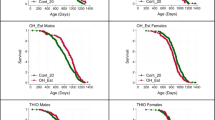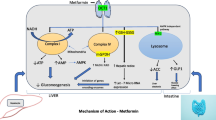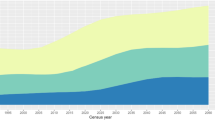The physiologically active metabolite of vitamin D3, 1,25-dihydroxycholecalciferol (D3), plays an important role in embryonic development and cell differentiation. Previously, we have demonstrated that D3 significantly induces differentiation and inhibits growth of LA-N-5 human neuroblastoma cells at concentrations of 24 nm and higher. In this study, we compared two D3 analogs, 20-epi-22oxa-25a,26a,27a-tri-homo-1,25-D3 (KH 1060) and 1,25-dihydroxy-22,24-diene, 24,26,27-trihomo (EB 1089), with D3 with respect to their effects on differentiation and growth inhibition. We report an inhibition of growth by 45–55% in cells treated with 0.24 nm EB 1089 and 0.24 nm KH 1060, similar to that seen in cells treated with 24 nM D3. At these concentrations, both EB 1089 and KH 1060 stimulate the differentiation of LA-N-5 neuroblastoma cells as shown by increased neurite outgrowth, decreased N-myc expression and decreased invasiveness in vitro. An increase in acetylcholinesterase activity, a functional measure of differentiation, was also exhibited. Previous reports have shown that treatment doses needed to achieve 24 nm serum concentrations of D3 in patients would result in hypercalcemia. EB 1089 and KH 1060 can cause the same in vitro effects on LA-N-5 human neuroblastoma cells at 1/100 of the concentration required of D3. These data suggest a potential clinical efficacy of EB 1089 and KH 1060 as biological response modifiers.
Similar content being viewed by others
References
Young JLJ, Ries LG, Silverberg E et al, 1986, Cancer incidence, survival and mortality for children younger than 15 years. Cancer, 58, 598.
Abemayor E and Sidell N, 1989, Human neuroblastoma cell lines as models for the in vitro study of neoplastic and neuronal cell differentiation. Envir Hlth Perspect, 80, 3–15.
Evans AE, Chatten J, D'Angio GJ et al, 1980, A review of 17 IV-S neuroblastoma patients at the Children's Hospital of Philadelphia. Cancer, 45, 833–9.
Lando M, Abemayor E, Verity MA et al, 1990, Modulation of intracellular cyclic adenosine monophosphate levels and the differentiation response of human neuroblastoma cells. Cancer Res, 50, 722–7.
Wuarin L, Verity MA and Sidell N, 1991, Effects of interferon-gamma and its interactions with retinoic acid on human neuroblastoma differentiation. Int J Cancer, 48, 136–41.
Moore TB, Sidell N, Chow VTJ et al, The differentiating effects of 1,25-dihydroxycholecalciferol (D3) on LA-N-5 human neuroblastoma cells, and its synergy with retinoic acid. Am J Ped Hem Oncol, in press.
Sidell N, Wada R, Han G et al, 1995, Phenylacetate synergizes with retinoic acid in inducing the differentiation of human neuroblastoma cells. Int J Cancer, 60, 507–14.
Sidell N, Lucas CA and Kreutzberg GW, 1984, Regulation of acetyl-cholinesterase activity by retinoic acid in a human neuroblastoma cell line. Expl Cell Res, 155, 305–9.
Mangelsdorf DJ, Koeffler HP, Donaldson CA et al, 1984, 1,25-Dihydroxy-vitamin D3 induced differentiation in human promyelocytic leukemia cell line (HL-60): receptor mediated maturation to macrophage-like cells. J Cell Biol, 98, 391.
Koeffler HP, Hirji K, Itri L, Southern California Leukemic Group, 1985, 1,25-Dihydroxyvitamin D3: in vivo and in vitro effects on human preleukemic and leukemic cells. Cancer Treat Rep, 69, 1399.
Ikegaki N, Bukovsky J and Kennet RH, 1986, Identification and characterization of the N-myc gene product in human neuroblastoma cells by monoclonal antibodies with defined specificities. Proc Natl Acad Sci, 83, 5929–33.
Thiele C and Israel MA, 1988, Regulation of N-myc expression is a critical event controlling the ability of human neuroblasts to differentiate. Expl Cell Biol, 56, 321–33.
Thiele CT, Reynolds CP and Israel MA, 1985, Decreased expression of N-myc precedes retinoic acid-induced morphological differentiation of human neuroblastoma. Nature, 313, 404–6.
Seeger RC, Brodeur GM, Sather H et al, 1985, Association of multiple copies of the N-myc oncogene with rapid progession of neuroblastoma. N Engl J Med, 313, 111–16.
Bernards R, Dessain SK and Weinberg RA, 1986, N-myc amplification causes down modulation of MHC Class I antigen expression in neuroblastoma. Cell, 47, 667–74.
Tabin CJ, 1991, Retinoids, homeoboxes, and growth factors: toward molecular models for limb development. Cell, 66, 199–217.
Koeffler HP, Armatruda T, Ikekawa N, Kobayashi Y and DeLuca HF, 1984, Induction of macrophage differentiation of human normal and leukemic myeloid stem cells by 1,25-dihydroxyvitamin D3 and its fluorinated analogues. Cancer Res, 44, 5624.
Saunders DE, Christensen C, Wappler NL et al, 1993, Inhibition of c-myc in breast and ovarian carcinoma cells by 1,25-dihydroxyvitamin D3, retinoic acid and dexamethasone. Anti-cancer Drugs, 4, 201–8.
Fan FS and Yu WCY, 1995, 1,25-Dihydroxyvitamin D3 suppresses cell growth, DNA synthesis, and phosphorylation of retinoblastoma protein in a breast cancer cell line. Cancer Invest, 13, 280–6.
Sebag M, Henderson J, Rhim J et al, 1992, Relative resistance to 1,25-dihydroxyvitamin D3 in a keratinocyte model of tumor progression. J Biol Chem, 267, 12162–7.
Skowronski RJ, Peehl DM and Feldman D, 1995, Actions of vitamin D3 analogs on human prostate cancer cell lines: comparison with 1,25-dihydroxyvitamin D3. Endocrinology, 136, 20–6.
Binderup L, Latini S, Binderup E et al, 1991, 20-Epi-vitamin D3 analogues: a novel class of potent regulators of cell growth and immune responses. Biochem Pharmac, 42, 1569–75.
Pakkala S, deVos S, Elstner E et al, 1995, Antileukemic activities and effects on serum calcium of three novel vitamin D3 analogs. Leukemia Res, 19, 65–72.
Zhou JY, Norman AW, Chen DL et al, 1990, 1,25-Dihydroxy-16-ene-23-yne-vitamin D3 prolongs survival time of leukemic mice. Proc Natl Acad Sci, 87, 3929–32.
Colston KW, Mackay AG, James SY et al, 1992, EB 1089: a new vitamin D analogue that inhibits the growth of breast cancer cells in vivo and in vitro. Biochem Pharmac, 44, 2273–80.
Author information
Authors and Affiliations
Rights and permissions
About this article
Cite this article
Moore, T.B., Koeffler, H.P., Yamashiro, J.M. et al. Vitamin D3 analogs inhibit growth and induce differentiation in LA-N-5 human neuroblastoma cells. Clin Exp Metast 14, 239–245 (1996). https://doi.org/10.1007/BF00053897
Received:
Accepted:
Issue Date:
DOI: https://doi.org/10.1007/BF00053897




